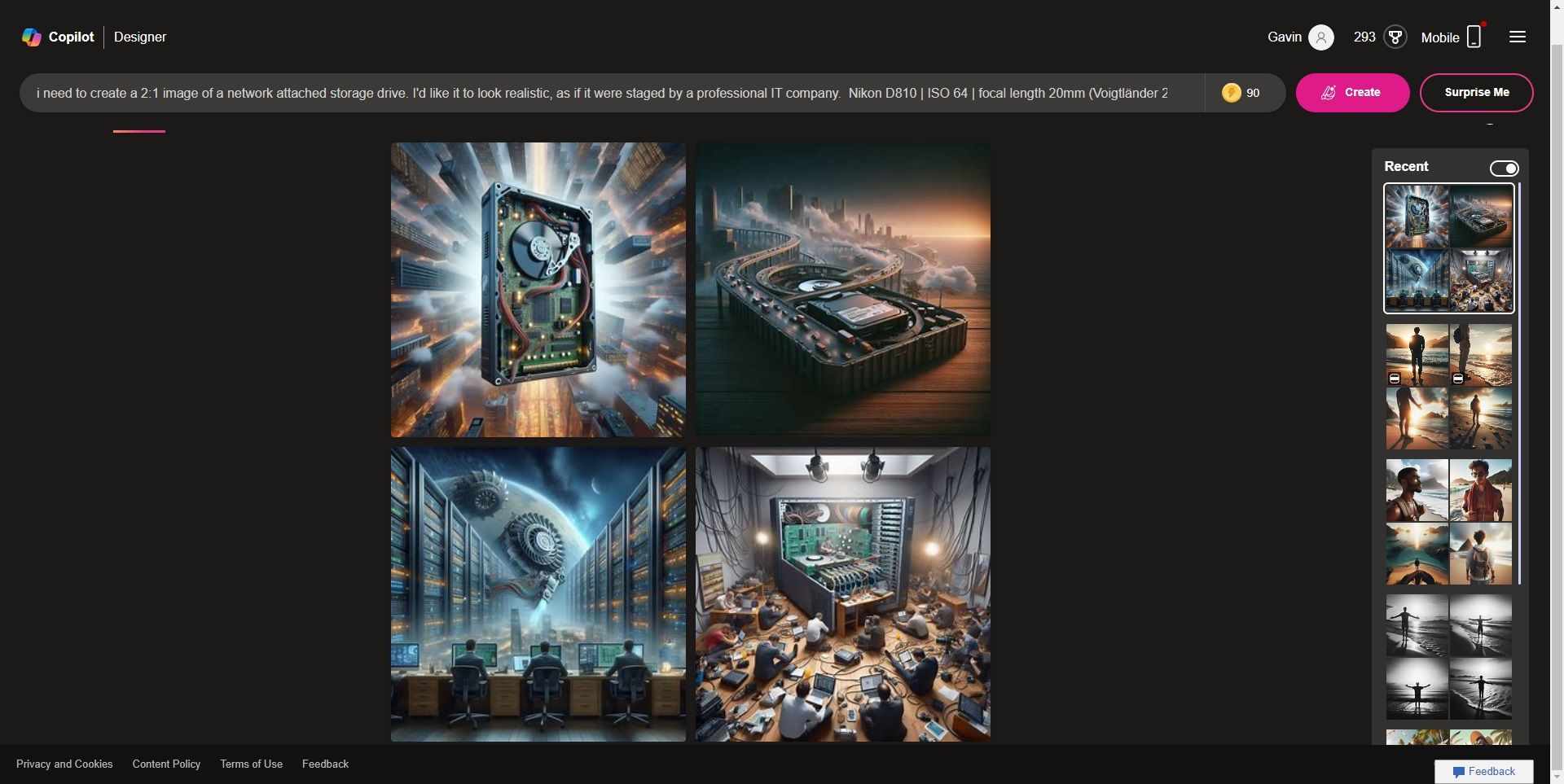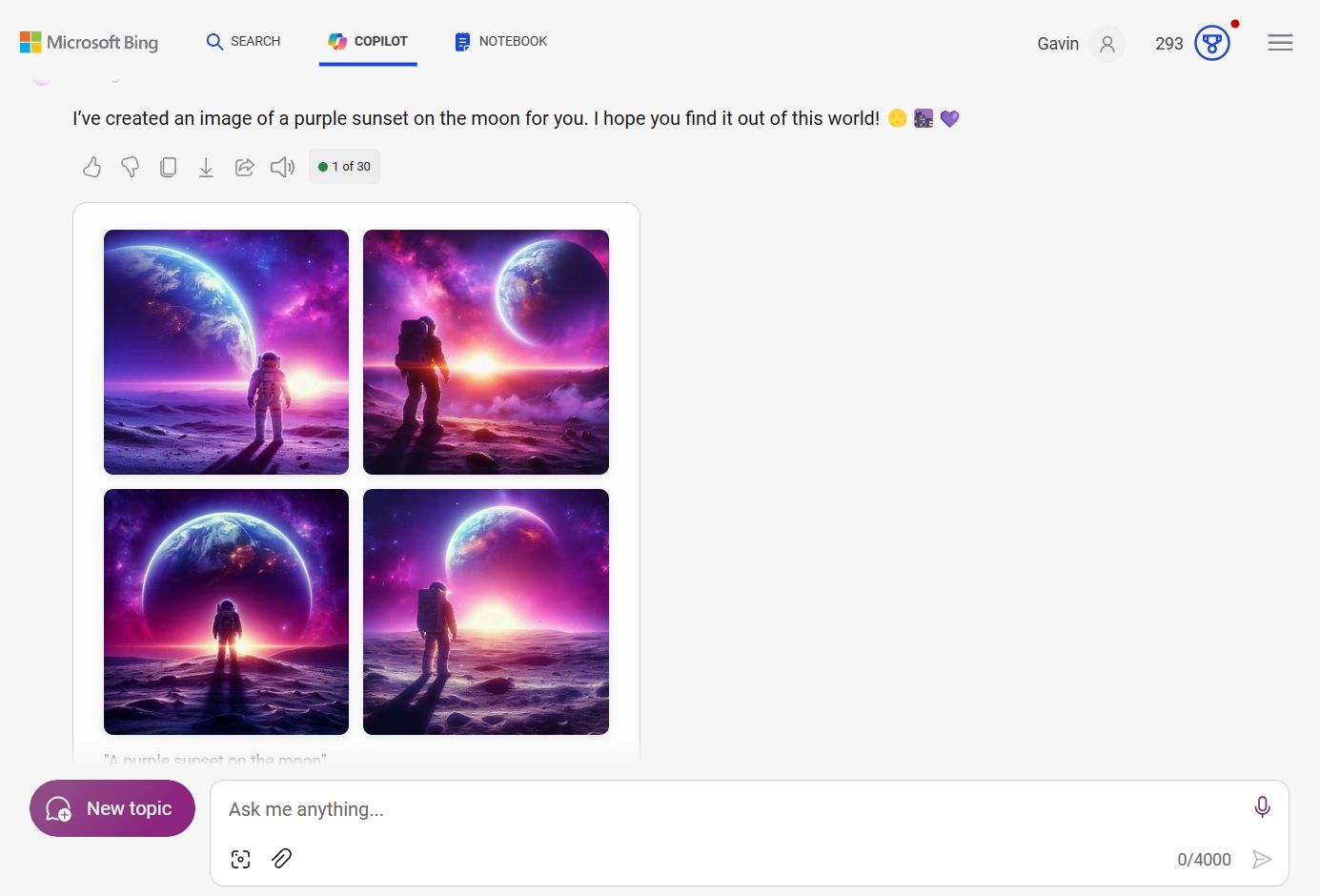Artificial Intelligence (AI) Explained in Simple Terms
Artificial intelligence is all the rage, with its huge potential causing a stir in almost every industry. But fully understanding AI can be tricky, especially if you're not well-versed in tech topics.
So, let's break down artificial intelligence into its most simple terms. How does AI work, and how is it being used?
The Simplest Explanation of AI
Artificial intelligence is like teaching computers to learn just like humans, therefore simulating how humans think. AI does this by looking at lots of data or examples and then using that to make decisions or predictions.
Imagine you are learning to ride a bike. After falling a few times, you start understanding how to balance and pedal simultaneously. That's how machine learning, a part of AI, works. It looks at a lot of data and then learns patterns from it. Another part of AI, natural language processing, is similar to teaching computers to understand and speak human language.
But even with all this, computers still can't fully think or understand like humans. Modern AI systems don't have common sense, emotions, or consciousness.
AI in More Detail

Artificial intelligence (AI) is a branch of computer science aiming to build machines capable of mimicking human intelligence. It involves creating algorithms that allow computers to learn from and make decisions or predictions based on data rather than following only explicitly programmed instructions.
Machine Learning (ML)
Machine learning (ML), a subset of AI, involves systems that can "learn" from data. These algorithms improve their performance as the number of datasets they learn from increases.
Deep learning, a further subset of machine learning, uses artificial neural networks to make decisions and predictions. It is designed to mimic how a human brain learns and makes decisions.
Natural Language Processing (NLP)
Natural language processing (NLP) is another important aspect of AI, dealing with the interaction between computers and humans using natural language.
This often involves an AI system taking in a natural language request, analyzing it, deriving context, and then producing a natural language response.
For example...
Human: "Could you find me a few examples of toxic plants in South America?" AI chatbot: "Sure! Here are some examples of toxic plants in South America..." [and so on]Neural networks are used in NLP and come in many different forms, including:
Pretrained transformer neural networks Recurrent neural networks Deep belief networks Convolutional neural networks Self-organizing mapsThe ability of machines to understand and respond to human language is crucial for many AI applications, like virtual assistants and AI chatbots (which we'll discuss in a moment).
Artificial intelligence can be classified into two main types: narrow AI, which is designed to perform a narrow task (such as facial recognition or internet searches), and artificial general intelligence (AGI), which is an AI system with generalized human cognitive abilities so that it can outperform humans at most economically valuable work. AGI is sometimes referred to as strong AI.
However, despite many advancements, AI still does not possess the full spectrum of human cognitive abilities, and we are still far from achieving true artificial general intelligence. The current AI technologies are task-specific and cannot understand context outside their specific programming.
How Is AI Being Used Today?
AI has potential and applications that stretch far beyond the tech realm alone.
1. Chatbots

Even if you're not big into tech, you've probably heard the name "ChatGPT." ChatGPT (short for Chat Generative Pre-transformer) is a generative AI chatbot. But this isn't like the chatbots you may have used in the past. ChatGPT uses artificial intelligence to process natural human language, find data, and provide responses.
ChatGPT's capabilities form a long list, including fact-checking, checking spelling and grammar, creating schedules, writing resumes, and even translating languages.
HuggingChat, Claude, and Gemini (formerly Bard) are other examples of AI chatbots. These services all differ in certain ways. Some are free, some are paid, some specialize in certain areas, while others are better with general tasks.
2. Data Analysis
Data analysis is a key part of our world, whether in research, healthcare, business, or otherwise. Computers have been analyzing data for many years, but using artificial intelligence can take things to the next level.
AI systems can more effectively detect trends, patterns, and inconsistencies than a typical computer (or human, for that matter). For example, an AI system could more distinctly highlight less obvious user habits or preferences for social media platforms, allowing it to show more personalized advertisements.
3. Production and Design
When designing products, many elements must be considered. The cost of materials, how they're sourced, and how efficiently the product will perform are just a few factors that companies need to keep in mind, and this is where AI can help.
Because AI can learn and discover new things based on the information it is given, it can be used to carve out more cost-effective and sustainable materials and production practices for businesses. For instance, an AI system could list more eco-friendly materials that could be used in a product's battery given a comprehensive data set to work from.
4. Art Creation

AI-generated art took the world by storm in 2022, with products like DALL-E, Stable Diffusion, and Midjourney becoming extremely popular. These AI text-to-image tools take a text-based prompt and generate an art piece based on the request.
For example, if you type "purple sunset on the moon" into DALL-E, you'll get more than one result. Some art generators also let you pick a style for your generated image, such as vintage, hyperrealistic, or anime. DALL-E has evolved a lot since its initial release and is now on its third version, DALL-E 3. You can use DALL-E on ChatGPT Plus to generate AI images in your chats.

Some artists have rejected AI art generators, as they are trained on pre-existing online art to learn how to create their prompted pieces. Artists claim this is a breach of copyright and contributes to the theft of original art, an issue that already spans the web.
The Future of AI
AI is already being used to develop new medicines, highlight more sustainable business practices, and even make our day-to-day lives easier by performing mundane tasks like cooking or cleaning.
However, many think that the future of AI is dark and dystopian. It's no surprise that this is a common assumption, given how sci-fi books and films have created some scary stereotypes around AI and its possible consequences.
AI can indeed be abused or mishandled, but this is true for any technology. We've seen cybercriminals exploit Wi-Fi, VPNs, email, and even flash drives to spread malware and push scams. However, the worry is concentrated on artificial intelligence because of its capabilities.
In January 2023, an individual posted to a hacking forum claiming they had successfully created malware using ChatGPT. It wasn't highly complex malware, but the ability to create malicious code via an AI chatbot got people talking. If less advanced AI is being abused now, what will happen if super-intelligent computers are exploited in the future?
At the moment, there are no AI systems that can think on the same level as a human. Many have predicted what such a machine would look like, but it's all hypothetical. While some think we'll create machines with human-level cognitive abilities in the next decade, others think it will take much longer.
If AI is regulated correctly, its development and use could be controlled to prevent bad actors from getting their hands on highly advanced technology.
Licenses, laws, and general rules of thumb all play a role in keeping AI out of the wrong hands. However, this will need to be done without restricting the development of and access to AI technology too tightly, as this could quickly become counterproductive.
-
 8 essential free and paid API recommendations for LLMHarnessing the Power of LLMs: A Guide to APIs for Large Language Models In today's dynamic business landscape, APIs (Application Programming Inter...AI Posted on 2025-04-21
8 essential free and paid API recommendations for LLMHarnessing the Power of LLMs: A Guide to APIs for Large Language Models In today's dynamic business landscape, APIs (Application Programming Inter...AI Posted on 2025-04-21 -
 User Guide: Falcon 3-7B Instruct ModelTII's Falcon 3: A Revolutionary Leap in Open-Source AI TII's ambitious pursuit of redefining AI reaches new heights with the advanced Falcon 3...AI Posted on 2025-04-20
User Guide: Falcon 3-7B Instruct ModelTII's Falcon 3: A Revolutionary Leap in Open-Source AI TII's ambitious pursuit of redefining AI reaches new heights with the advanced Falcon 3...AI Posted on 2025-04-20 -
 DeepSeek-V3 vs. GPT-4o and Llama 3.3 70B: The Strongest AI Model RevealedThe evolution of AI language models has set new standards, especially in the coding and programming landscape. Leading the c...AI Posted on 2025-04-18
DeepSeek-V3 vs. GPT-4o and Llama 3.3 70B: The Strongest AI Model RevealedThe evolution of AI language models has set new standards, especially in the coding and programming landscape. Leading the c...AI Posted on 2025-04-18 -
 Top 5 AI intelligent budgeting toolsUnlocking Financial Freedom with AI: Top Budgeting Apps in India Are you tired of constantly wondering where your money goes? Do bills seem to devour...AI Posted on 2025-04-17
Top 5 AI intelligent budgeting toolsUnlocking Financial Freedom with AI: Top Budgeting Apps in India Are you tired of constantly wondering where your money goes? Do bills seem to devour...AI Posted on 2025-04-17 -
 Detailed explanation of Excel SUMPRODUCT function - School of Data AnalysisExcel's SUMPRODUCT Function: A Data Analysis Powerhouse Unlock the power of Excel's SUMPRODUCT function for streamlined data analysis. This ve...AI Posted on 2025-04-16
Detailed explanation of Excel SUMPRODUCT function - School of Data AnalysisExcel's SUMPRODUCT Function: A Data Analysis Powerhouse Unlock the power of Excel's SUMPRODUCT function for streamlined data analysis. This ve...AI Posted on 2025-04-16 -
 In-depth research is fully open, ChatGPT Plus user benefitsOpenAI's Deep Research: A Game-Changer for AI Research OpenAI has unleashed Deep Research for all ChatGPT Plus subscribers, promising a significan...AI Posted on 2025-04-16
In-depth research is fully open, ChatGPT Plus user benefitsOpenAI's Deep Research: A Game-Changer for AI Research OpenAI has unleashed Deep Research for all ChatGPT Plus subscribers, promising a significan...AI Posted on 2025-04-16 -
 Amazon Nova Today Real Experience and Review - Analytics VidhyaAmazon Unveils Nova: Cutting-Edge Foundation Models for Enhanced AI and Content Creation Amazon's recent re:Invent 2024 event showcased Nova, its ...AI Posted on 2025-04-16
Amazon Nova Today Real Experience and Review - Analytics VidhyaAmazon Unveils Nova: Cutting-Edge Foundation Models for Enhanced AI and Content Creation Amazon's recent re:Invent 2024 event showcased Nova, its ...AI Posted on 2025-04-16 -
 5 ways to use ChatGPT timing task functionChatGPT's New Scheduled Tasks: Automate Your Day with AI ChatGPT recently introduced a game-changing feature: Scheduled Tasks. This allows users ...AI Posted on 2025-04-16
5 ways to use ChatGPT timing task functionChatGPT's New Scheduled Tasks: Automate Your Day with AI ChatGPT recently introduced a game-changing feature: Scheduled Tasks. This allows users ...AI Posted on 2025-04-16 -
 Which of the three AI chatbots respond to the same prompt is the best?With options like Claude, ChatGPT, and Gemini, choosing a chatbot can feel overwhelming. To help cut through the noise, I put all three to the test us...AI Posted on 2025-04-15
Which of the three AI chatbots respond to the same prompt is the best?With options like Claude, ChatGPT, and Gemini, choosing a chatbot can feel overwhelming. To help cut through the noise, I put all three to the test us...AI Posted on 2025-04-15 -
 ChatGPT is enough, no dedicated AI chat machine is neededIn a world with new AI chatbots launching daily, it can be overwhelming to decide which one is the right “one.” But in my experience, ChatGPT handles ...AI Posted on 2025-04-14
ChatGPT is enough, no dedicated AI chat machine is neededIn a world with new AI chatbots launching daily, it can be overwhelming to decide which one is the right “one.” But in my experience, ChatGPT handles ...AI Posted on 2025-04-14 -
 Indian AI Moment: Competition with China and the United States in Generative AIIndia's AI Ambitions: A 2025 Update With China and the US heavily investing in Generative AI, India is accelerating its own GenAI initiatives. Th...AI Posted on 2025-04-13
Indian AI Moment: Competition with China and the United States in Generative AIIndia's AI Ambitions: A 2025 Update With China and the US heavily investing in Generative AI, India is accelerating its own GenAI initiatives. Th...AI Posted on 2025-04-13 -
 Automating import of CSV to PostgreSQL using Airflow and DockerThis tutorial demonstrates building a robust data pipeline using Apache Airflow, Docker, and PostgreSQL to automate data transfer from CSV files to a ...AI Posted on 2025-04-12
Automating import of CSV to PostgreSQL using Airflow and DockerThis tutorial demonstrates building a robust data pipeline using Apache Airflow, Docker, and PostgreSQL to automate data transfer from CSV files to a ...AI Posted on 2025-04-12 -
 Swarm Intelligence Algorithms: Three Python ImplementationsImagine watching a flock of birds in flight. There's no leader, no one giving directions, yet they swoop and glide together in perfect harmony. It may...AI Posted on 2025-03-24
Swarm Intelligence Algorithms: Three Python ImplementationsImagine watching a flock of birds in flight. There's no leader, no one giving directions, yet they swoop and glide together in perfect harmony. It may...AI Posted on 2025-03-24 -
 How to Make Your LLM More Accurate with RAG & Fine-TuningImagine studying a module at university for a semester. At the end, after an intensive learning phase, you take an exam – and you can recall th...AI Posted on 2025-03-24
How to Make Your LLM More Accurate with RAG & Fine-TuningImagine studying a module at university for a semester. At the end, after an intensive learning phase, you take an exam – and you can recall th...AI Posted on 2025-03-24 -
 What is Google Gemini? Everything You Need To Know About Google’s ChatGPT RivalGoogle recently released its new Generative AI model, Gemini. It results from a collaborative effort by a range of teams at Google, including members ...AI Posted on 2025-03-23
What is Google Gemini? Everything You Need To Know About Google’s ChatGPT RivalGoogle recently released its new Generative AI model, Gemini. It results from a collaborative effort by a range of teams at Google, including members ...AI Posted on 2025-03-23
Study Chinese
- 1 How do you say "walk" in Chinese? 走路 Chinese pronunciation, 走路 Chinese learning
- 2 How do you say "take a plane" in Chinese? 坐飞机 Chinese pronunciation, 坐飞机 Chinese learning
- 3 How do you say "take a train" in Chinese? 坐火车 Chinese pronunciation, 坐火车 Chinese learning
- 4 How do you say "take a bus" in Chinese? 坐车 Chinese pronunciation, 坐车 Chinese learning
- 5 How to say drive in Chinese? 开车 Chinese pronunciation, 开车 Chinese learning
- 6 How do you say swimming in Chinese? 游泳 Chinese pronunciation, 游泳 Chinese learning
- 7 How do you say ride a bicycle in Chinese? 骑自行车 Chinese pronunciation, 骑自行车 Chinese learning
- 8 How do you say hello in Chinese? 你好Chinese pronunciation, 你好Chinese learning
- 9 How do you say thank you in Chinese? 谢谢Chinese pronunciation, 谢谢Chinese learning
- 10 How to say goodbye in Chinese? 再见Chinese pronunciation, 再见Chinese learning

























